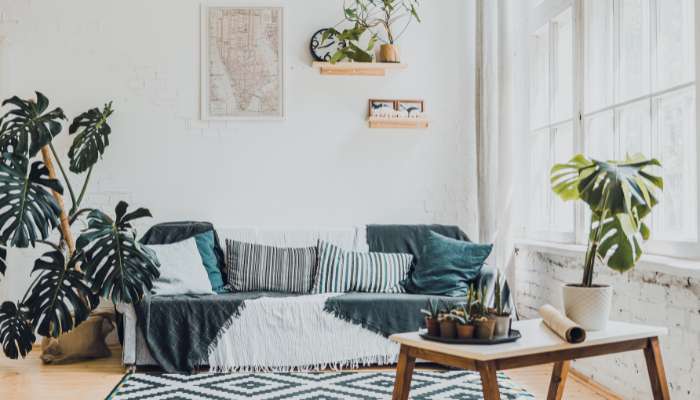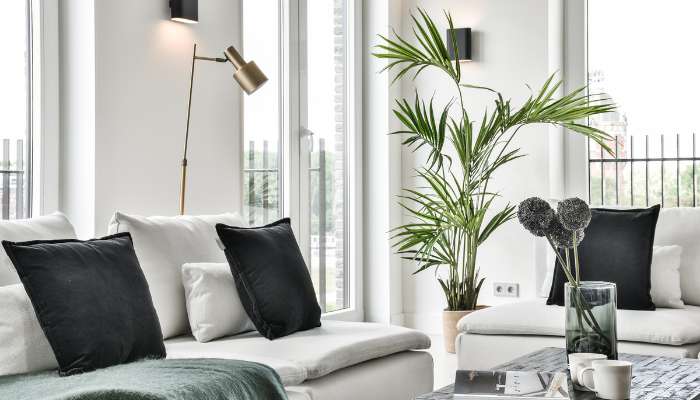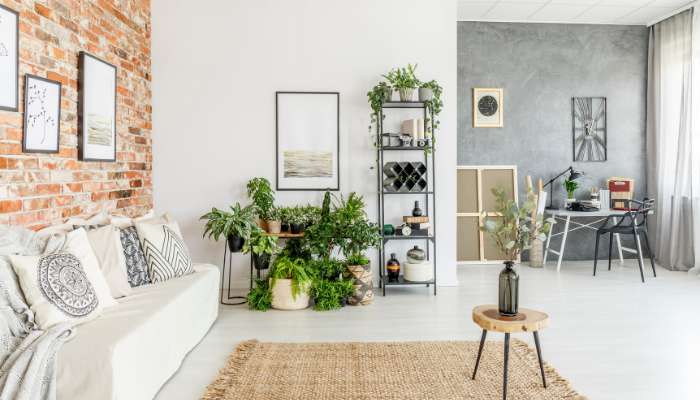Welcome to the ultimate guide on indoor plants for living rooms! In this comprehensive article, we’ll explore how adding a touch of greenery can breathe new life into your indoor spaces, particularly your living room.
From selecting the perfect plants to understanding their care needs, we’ve got you covered. Let’s dive in and discover the wonders of indoor gardening!
Table of Contents
The Benefits of Indoor Plants for Living Room
Indoor plants do much more than just beautify your living space. They offer a myriad of benefits, including purifying the air, reducing stress, and boosting mood and productivity.
Research suggests that plants can even help lower blood pressure and improve overall well-being. By introducing indoor plants into your living room, you’re not only enhancing its aesthetics but also fostering a healthier environment for you and your family.
Choosing the Right Indoor Plants for Living Room
Not all plants thrive indoors, so it’s essential to choose species that can adapt to low-light conditions and indoor environments. Opt for varieties such as snake plants, pothos, or peace lilies, known for their resilience and air-purifying qualities.
Consider factors like lighting, space availability, and maintenance requirements when selecting the perfect green companions for your living room oasis.

Designing with Indoor Plants
Integrating indoor plants into your living room decor can elevate its visual appeal and create a harmonious atmosphere. Experiment with different plant sizes, textures, and pots to achieve the desired aesthetic effect.
Create focal points by strategically placing plants in empty corners or near windows to maximize natural light. Incorporating plants into your decor adds a refreshing touch of nature, transforming your living room into a tranquil retreat.
Caring for Your Indoor Plants for Living Room
Proper care is essential to keep your indoor plants thriving and healthy. Ensure they receive adequate sunlight, water, and humidity levels according to their specific needs. Regularly dusting leaves, pruning, and repotting when necessary helps prevent pests and diseases.
Consider investing in a moisture meter to monitor soil moisture levels and adjust watering frequency accordingly. With proper care and attention, your indoor plants will flourish and beautify your living room for years to come.

Creative Display Ideas
Get creative with how you display your indoor plants to add personality and style to your living room. Arrange them on shelves, plant stands, or hanging macramé holders to create visual interest and depth.
Mix and match different plant varieties to create dynamic compositions that reflect your unique taste and preferences.
Experiment with unconventional containers such as terrariums, vintage crates, or repurposed ceramic pots for a touch of whimsy and charm.
Common Issues and Troubleshooting
Despite your best efforts, indoor plants may encounter occasional challenges such as yellowing leaves, pest infestations, or overwatering.
Learn to identify and address common issues promptly to prevent them from affecting your plant’s health. Overwatering, for example, can lead to root rot, while inadequate light may cause stunted growth.
By understanding the specific needs of your plants and taking proactive measures, you can overcome these challenges and enjoy lush, thriving greenery in your living room.
Frequently Asked Questions (FAQs)
How often should I water my indoor plants?
The watering frequency depends on factors such as plant type, pot size, and environmental conditions. Generally, it’s best to water when the top inch of soil feels dry to the touch.
What are some low-maintenance indoor plants for beginners?
Beginners can start with easy-to-care-for plants like pothos, spider plants, or succulents, which require minimal attention and thrive in various indoor conditions.
Can indoor plants improve air quality?
Yes, many indoor plants are natural air purifiers, filtering out toxins and pollutants from the air and creating a healthier indoor environment.
How can I prevent pests on my indoor plants?
Regularly inspect your plants for signs of pests such as aphids or spider mites. Maintain good airflow around plants, avoid overwatering, and consider using natural pest control methods like neem oil or insecticidal soap.
Do indoor plants need fertilizer?
Indoor plants benefit from occasional fertilization during the growing season to provide essential nutrients for healthy growth. Use a balanced, water-soluble fertilizer diluted to half strength to avoid overfeeding.
Can indoor plants survive in low-light conditions?
Yes, several indoor plants, such as snake plants and ZZ plants, can thrive in low-light environments. However, it’s essential to choose species adapted to low-light conditions and provide supplemental lighting if necessary.
Conclusion:
Transforming your living room with indoor plants is a rewarding endeavor that brings the beauty and benefits of nature into your home.
By selecting the right plants, thoughtfully designing, and providing proper care, you can create a lush and inviting space that lifts your spirits and enhances your well-being. Embrace the green revolution and start your indoor gardening journey today!

















3 thoughts on “Best Indoor Plants for Living Room”